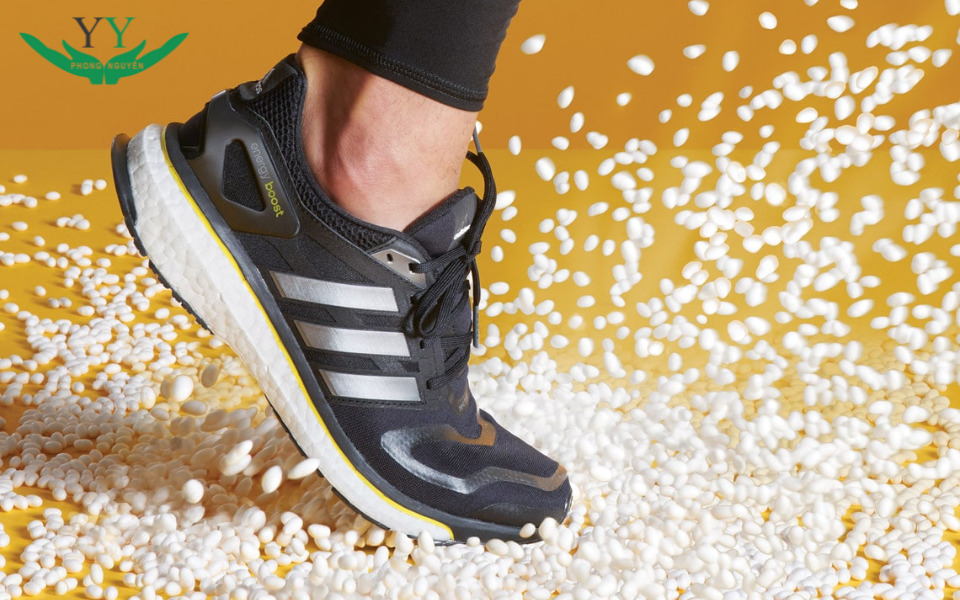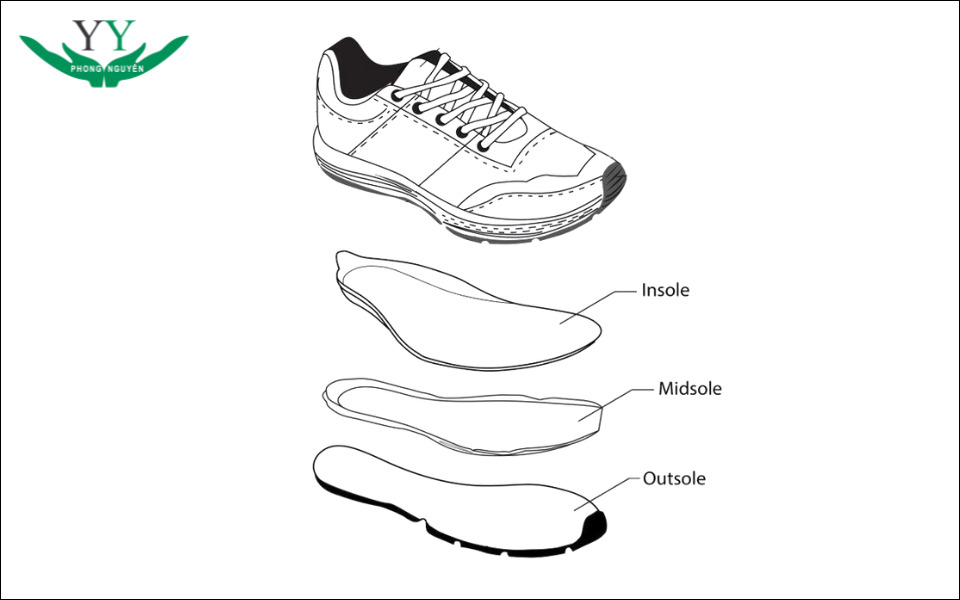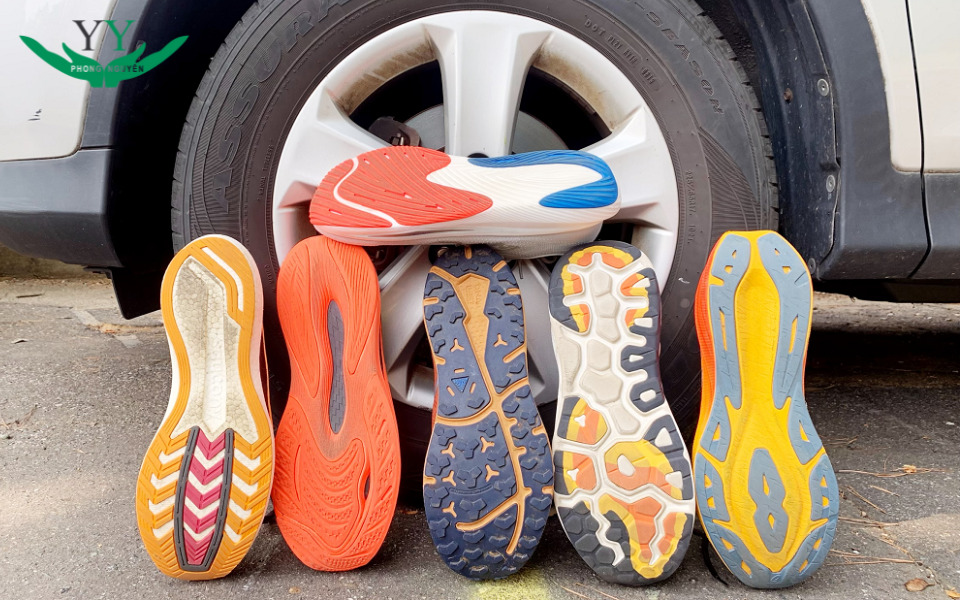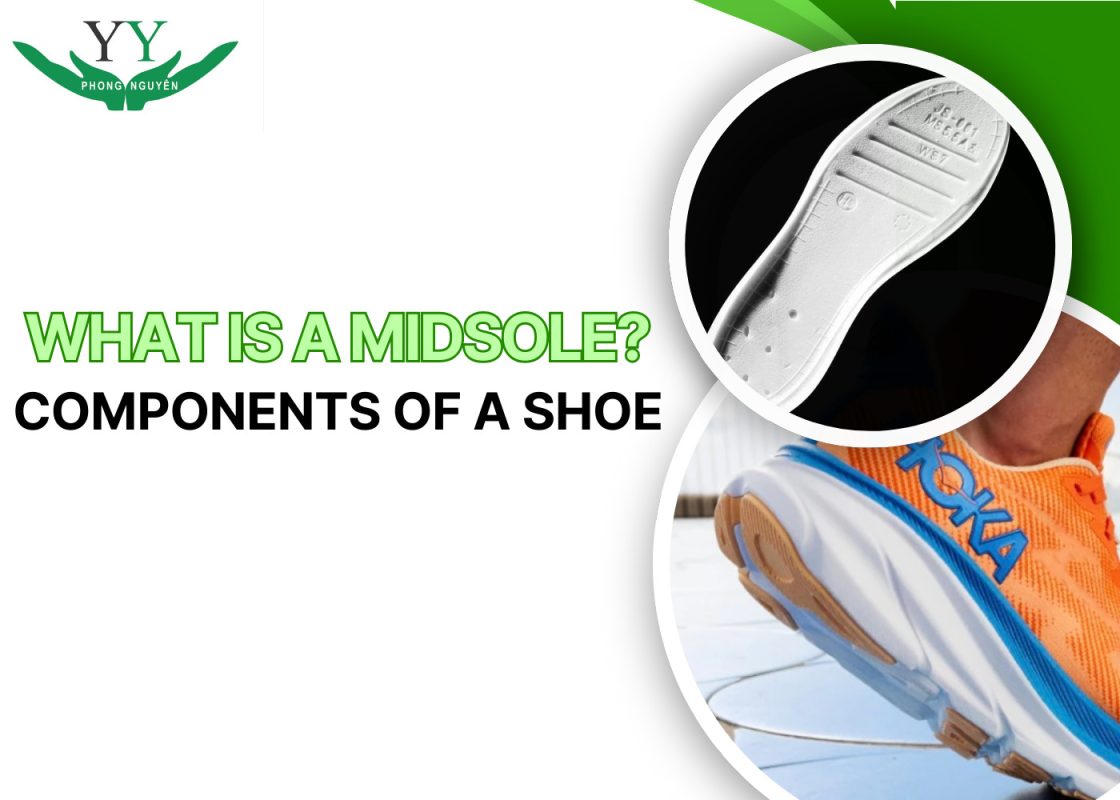When it comes to athletic shoes, many people often focus on the exterior design, brand, or how the shoes feel when trying them on. However, a critical component that determines comfort, durability, and support during physical activities lies within the shoe’s internal structure – the midsole. So, what is a midsole, and why is it considered the “heart” of a sports shoe?
What is a Midsole?
The midsole is the layer situated between the outsole (outer sole) and the insole (inner footbed). It is primarily responsible for absorbing impact forces, cushioning the foot, and providing support during movement.

When the foot strikes the ground—especially in activities such as running, jumping, or rapid directional changes—the force transmitted back into the body can be several times one’s body weight. The midsole acts as a buffer that absorbs shock, alleviates stress on the heel, knee joints, and spine, and plays a key role in preventing sports-related injuries and long-term discomfort.
Structure of an Athletic Shoe Sole
Though it may appear simple at first glance, the sole of an athletic shoe is composed of multiple layers, each with a distinct function. The standard sole construction includes three main components: the outsole, the midsole, and the insole.

Outsole
The outsole is the bottommost part of the shoe that makes direct contact with the ground. It is typically made from rubber or synthetic compounds known for high abrasion resistance.
The primary role of the outsole is to provide traction, prevent slipping, and protect the shoe’s lower structure from wear and tear. Outsoles often feature grooves, lugs, or textured patterns to increase friction and improve stability on a variety of surfaces.
Midsole
The midsole lies between the outsole and the insole and is considered the most crucial component of the sole in terms of performance and comfort. Midsoles are often made from lightweight, responsive materials and may incorporate advanced cushioning technologies such as Boost, React, or Zoom Air.
| Material | Key Features | Common Brands |
|---|---|---|
| EVA (Ethylene-Vinyl Acetate) | Lightweight, good rebound, cost-effective | Asics, Mizuno, Skechers |
| PU (Polyurethane) | Durable, responsive but heavier than EVA | Select Adidas, Reebok models |
| TPU (Thermoplastic Polyurethane) | Superior rebound, heat-resistant, long-lasting | Adidas Boost |
| Pebax (Polyether Block Amide) | Extremely light, highly elastic | Nike ZoomX, Saucony Endorphin |
Insole
Also known as the footbed, the insole is the removable inner layer that comes in direct contact with the sole of the foot.

Its function is to provide additional cushioning, arch support, and a better fit. Some insoles are designed specifically for individuals with foot conditions such as flat feet, sensitive heels, or low arches.
Components of an Athletic Shoe
A complete sports shoe is a combination of several smaller components, each serving a specific purpose. These include:
Toe Cap
The toe cap is the part that covers the front of the foot, designed to protect the toes from impact and external pressure. In certain athletic shoe models, the toe cap is reinforced with rubber, TPU, or durable woven fabric to enhance durability and resist abrasion. It also helps maintain the shoe’s shape.
Vamp
The vamp is the upper section of the shoe extending from the toe to the midfoot area. It covers the top of the foot and ensures stability during movement. Common materials used for the vamp include breathable mesh, synthetic leather, or advanced knitted textiles such as Nike’s Flyknit or Adidas’ Primeknit, offering flexibility and ventilation.
Mudguard
The mudguard is a protective overlay around the toe area that extends along the sides to the midfoot. Typically made from thicker and more durable materials than the rest of the upper, it protects the shoe from abrasions and impacts. Additionally, it contributes to structural integrity and shape retention.

Feather Edge
The feather edge is a narrow seam where the upper meets the sole. Though subtle, it plays a vital role in securing the upper to the sole and maintaining the shoe’s overall form and durability.
Midsole
As the technological core of the shoe, the midsole lies between the outsole and upper. It is commonly made from EVA, PU, or proprietary technologies like Adidas Boost or Nike Zoom Air. Its primary functions are to absorb impact, return energy, and enhance movement efficiency, ultimately determining the shoe’s performance and comfort level.
Outsole
The outsole is the bottom-most layer, in direct contact with the ground. It ensures grip, prevents slipping, and provides a stable base. Additionally, it shields the internal layers from erosion due to frequent contact with rough surfaces.

Upper
The upper encompasses the entire part of the shoe above the sole. Running and training shoes typically feature mesh or knitted fabrics for breathability and light weight, while basketball or gym shoes prioritize synthetic leather or TPU for added durability and support.
Heel Seat
The heel seat is the junction where the heel of the foot rests on the midsole. It bears most of the impact during heel strikes and is often designed to cradle the heel securely. Materials like EVA, PU, or advanced cushioning units (e.g., Zoom Air, GEL, Boost) are used here to enhance shock absorption.
Heel Counter
The heel counter is a component located at the rear of the shoe, typically rigid in form and integrated within the upper. Its primary function is to keep the heel stable and in the correct position during movement, especially during fast running or sudden changes in direction. The heel counter helps prevent heel slippage or ankle rolling – one of the main causes of injuries in athletes.

Quarter
The quarter wraps around the sides and back of the shoe, connecting the vamp and heel. It plays a crucial role in securing the foot and often showcases brand design elements like logos or graphics. It typically uses similar materials to the vamp.
Collar
The collar is the padded edge encircling the shoe opening where the ankle meets the shoe. It’s often cushioned to reduce friction and prevent blisters. In addition to comfort, the collar also maintains the shoe’s shape and ankle support.
Tongue
The tongue lies beneath the laces, extending from the toe area up to the collar. It protects the top of the foot from lace pressure. Typically made from soft foam and covered in fabric or mesh, it ensures breathability and comfort during extended wear.

Eyelets
Eyelets are the small holes along the eyestay through which laces are threaded. They may be reinforced with metal rings, TPU, or synthetic leather patches for added durability. Eyelets allow wearers to adjust lace tension for a customized fit.
Eyestay
The eyestay is the section that houses the eyelets. It is often reinforced to protect the upper from wear and to maintain the integrity of the lacing system. Aesthetic-wise, the eyestay adds structure and visual appeal to the shoe.
Topline
The topline is the uppermost edge of the shoe opening, where the foot is inserted. It’s commonly padded to reduce skin friction and enhance heel lockdown. Depending on the shoe type, the topline can be low-cut for flexibility or mid/high-cut for added ankle support.
Conclusion
Through this article, we’ve explored what is a midsole and the comprehensive construction of a typical athletic shoe. Understanding the roles and materials of each component will enable you to select the most suitable footwear for your needs—whether for running, sports, gym workouts, or daily wear. We hope Phong Nguyen has provided you with useful insights, and we look forward to sharing more exciting content with you soon!

